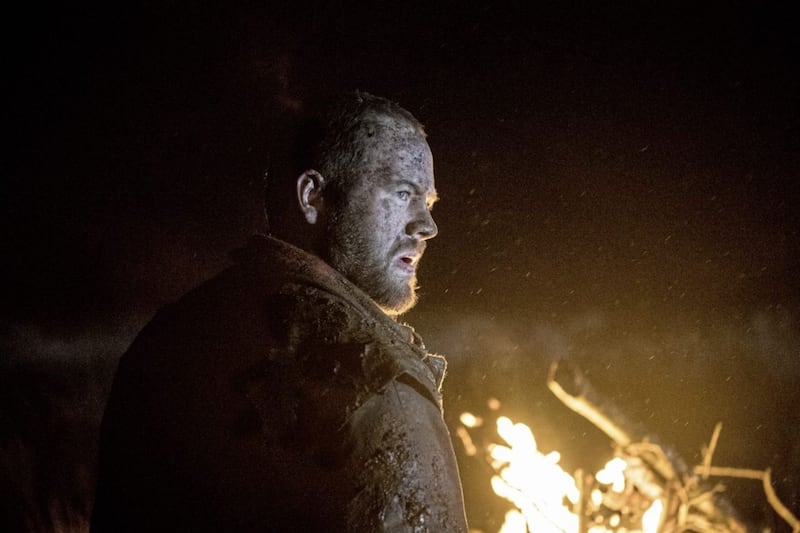RALPH Fiennes assumed his character in The Dig was a piece of fiction when he first read the script. The new Netflix film tells the extraordinary story of Sutton Hoo; the excavation – as the Second World War loomed – of a medieval grave in Suffolk in the south east of England, where a 27m-long ship was buried.
Not only that, but a chamber full of dazzling riches was found at the centre of the boat, the most iconic being the Sutton Hoo helmet.
Ipswich-born Fiennes knew about the famous discovery but it was only after he “quickly did some research, as we all do, on Wikipedia” that he realised the extent to which The Dig was based on a true story – and that Basil Brown actually existed.
“I was fairly ignorant, to be honest,” admits the actor, known for films such as The Grand Budapest Hotel and Schindler’s List, as well as the Harry Potter series, in which he memorably portrayed the evil Lord Voldemort.
“If someone said Sutton Hoo, I would probably go, ‘Yeah, battleship or burial ship’ and the helmet would come into my mind.
“And then I read the script, maybe about three or four years ago, three-and-a-half years ago now. And I was very moved by the characters.”
The star notes The Dig, which was adapted from the novel of that name by John Preston, “was a hard film to get into production. It’s the style of film people were making 25 years ago.”
But producer Gaby Tana believed in the project passionately – and it was to become the fifth collaboration for her and Fiennes.
Written by Moira Buffini, with Simon Stone as director, the historical drama also stars Carey Mulligan as wealthy widow Edith Pretty, who hires amateur archaeologist Basil Brown to excavate the burial mounds on her estate.
The story sees Edith learning she has a terminal illness, and there are tender scenes in which Basil has a conversation with her son Robert, as he comes to terms with his mother’s situation.
“Robert feels like he’s failing to support his sick mother and Basil tells him, ‘We all fail. Every day we fail’. We’re carried on a current of life and we have to accept our failures,” Fiennes says.
“It’s less about leaving something behind, and more that, by having a relationship with the past, it gives us a better understanding of ourselves and a better context of where we came from. Which in turn gives us an understanding about life.”
Fiennes is contemplative and thoughtful with his answers; you can tell this was a story he was genuinely excited to bring to the screen.
Interestingly, it took a long time for the real Basil Brown to be recognised for the incredible work he did with Sutton Hoo.
When the treasure he excavated was first shown to the general public in 1951, his name was not mentioned – but it now appears alongside that of Edith in the British Museum’s permanent display.
Asked if part of the appeal of The Dig was to teach people about Basil’s incredible achievements, and how important they were, Fiennes responds: “I mean, yes, I think people will want to find out about the Sutton Hoo.
“But the first thing I responded to was the human drama of Mrs Pretty and Basil and the relationship with the other characters and what was going on.”
He was especially passionate to do the role because he loved the writing.
“I love the delicacy of Moira Buffini’s writing, that what you look for is how a lot can be said with minimal words.
“It was wonderful; in a world where we get a lot of sensational films, or films that have either a strong romantic element or action element or horror element, this is modulated beautifully… I used to say it was like Chekhov.”
He elaborates: “I love Chekhov. I love how the lives are very delicately written, but huge shifts are changing inside people. But the external drama is quite gentle.
“I love Chekhov because his characters seem close to all of us; our desires, our wishes, our disappointments, aspirations. And then I think The Dig does all that, but at the centre is this extraordinary discovery of an Anglo-Saxon burial ship. So the mix of history, Chekhovian drama; I thought it was refreshing, given that there’s a lot of stuff that’s a lot more high definition, in film-making.”
Fiennes – who has also worked as a director on films Coriolanus, The Invisible Woman and The White Crow – agrees The Dig is a nuanced story, in which there is a lot happening beneath the surface with characters.
“Those films are risky, of course, because they can fall flat. You know, delicate human drama can be another word for ‘boring’ – but if the inherent internal life is available, you can lean into something that’s not telling you everything, because there’s a tension. That’s what a good novel does, I think.”
He continues: “I like those kinds of dramas – if they’re well done, and you feel there are huge undercurrents happening in people’s lives and the interior world of people is rich. For actors, those are great.
“I think it’s great to get parts where you feel, ‘my God, there’s a lot going on’.”
Plus, even in simply written scenes, “the camera – in the right hands – will pick up the things unsaid, and that builds”, he suggests.
“If the film is well structured and well executed, people are drawn in and it reaches deeper into you, I think.”
:: The Dig is available to watch now on Netflix.








